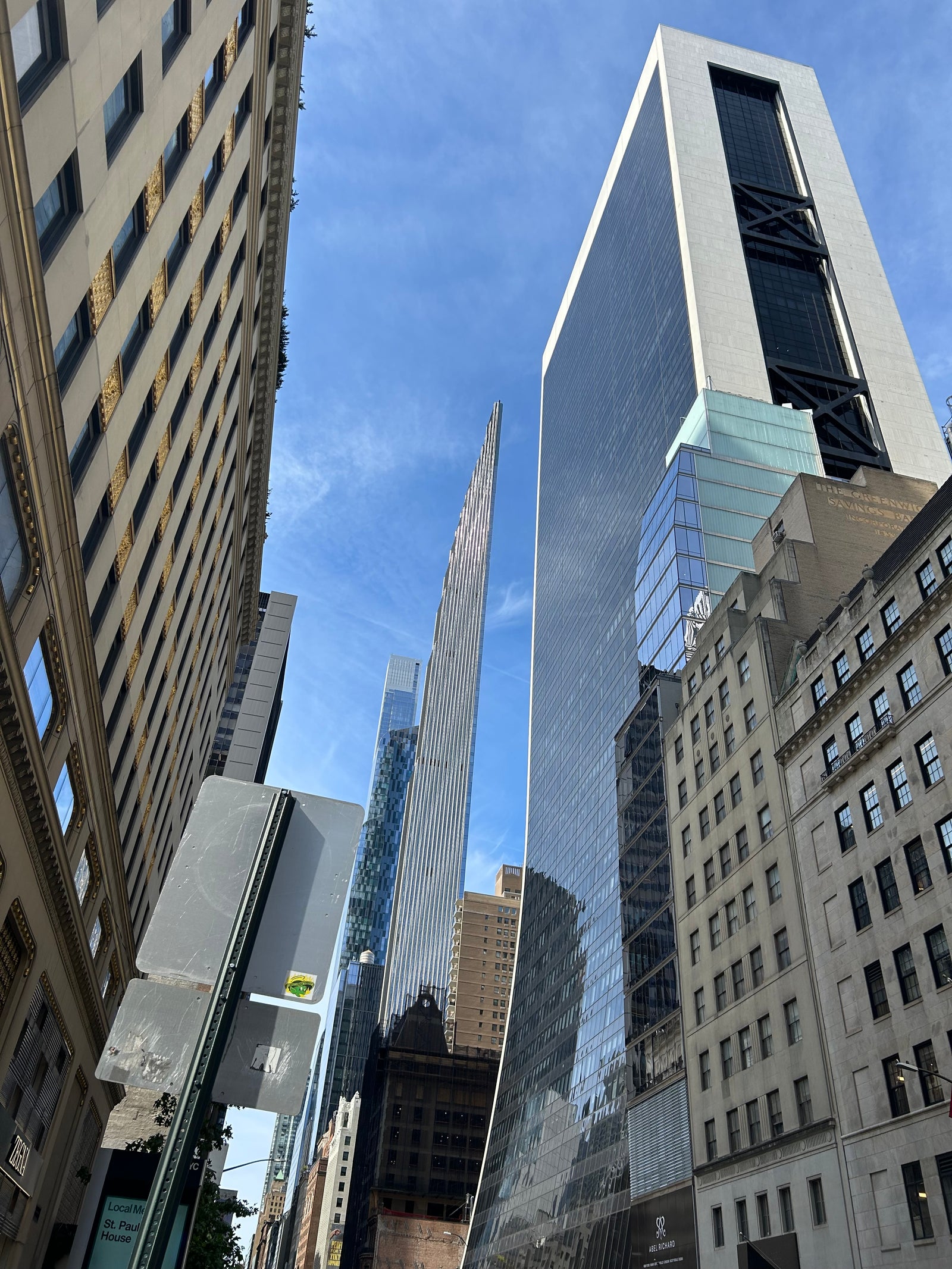 When we encounter a building so narrow it almost seems unreal, our eyes recalibrate.
When we encounter a building so narrow it almost seems unreal, our eyes recalibrate. What at first glance may appear like a photographic trick is often the product of bold architectural ambition. The slender silhouette captured here, the Steinway Tower in New York City, embodies a new era of skyscraper design, where “less width” becomes a feature not a limitation.
Skyscrapers have long been symbols of power, density, and gravity. But today’s most striking towers speak a subtler tongue. Rather than bulk and mass, they emphasize line, edge, and silhouette. Their presence is defined not by how much space they occupy on the ground, but by how sharply they articulate the space of the sky.These towers push slenderness ratios—height divided by width—into astonishing territory. Where older high-rises might have stretched 10 or 12 times their width, these modern towers flirt with 20:1, 24:1, even more. That compression multiplies the visual drama.Visual Compression & PerceptionSeveral visual effects are demonstrated here that make these towers so compelling:
- Silhouette as signature: A slender tower set against the sky often reads as a dark vertical ridge, stark and elegant, visually divorced from mass.
- Contrast with neighbors: The narrow form’s juxtaposition against broader buildings exaggerates its slenderness. In your image, the tower is “pinched” between its neighbors, making it seem even thinner by comparison.
- Perspective exaggeration: As the building rises, diminishing width accentuates vertical ascent. The tower becomes not so much a building as a vertical mark slicing through space.
- Edge and light play: Sharp vertical edges and light grazing its surfaces accentuate depth—or the intentional lack thereof.
- Foundational depth: With minimal footprint, foundations must go deep—often caissons or drilled piles anchored into bedrock.
- Core rigidity & load distribution: Strong cores, outriggers, shear walls, and mechanical interstitial floors help resist twisting and sway.
- Damping systems: Tuned mass dampers or pendulum masses are often used to neutralize motion perceptible to occupants.
- Façade design: Lightweight, strong, and aerodynamic skins help manage wind pressures. Some towers use subtle setbacks or tapering to manage vortex shedding and wind drag.
- Historic integration strategies: In some projects (like 111 West 57th Street), the base is a preserved heritage structure with the slender tower rising above, requiring careful structural transitions.
- Its visual presence is so dramatic because the contrast with adjacent buildings and the compression of perspective amplifies what would otherwise be a modest width into a standout, sky-ward punctuation.



